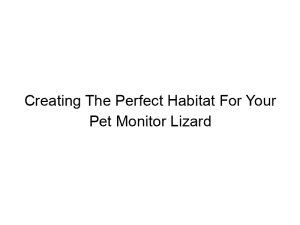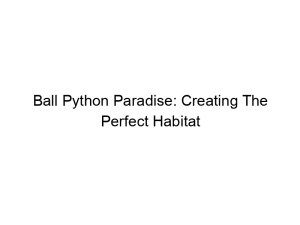Owning a horned frog is a rewarding experience, but providing the right environment is crucial for their health and longevity. Creating the Perfect Habitat for Your Pet Horned Frog involves understanding their natural environment and replicating it as closely as possible in captivity. This comprehensive guide will teach you everything you need to know, from choosing the right tank to maintaining ideal humidity and providing a stimulating environment for your amphibian friend. You’ll learn about substrate choices, appropriate lighting, necessary hiding places, and much more, ensuring your horned frog thrives under your care.
Horned frogs, also known as Pacman frogs, are terrestrial amphibians native to South America. They inhabit burrows in humid, forested areas, spending much of their time hidden underground. Understanding this behavior is key to designing a suitable habitat. They’re ambush predators,
patiently waiting for unsuspecting insects to wander within striking distance.
Choosing the Right Enclosure
Tank Size and Material
A 10-gallon tank is suitable for a single adult horned frog, but larger is always better. Glass terrariums are preferable due to their ease of cleaning and visibility. Avoid plastic containers as they can retain odors and scratches easily affecting aesthetic value and potentially the health of your frog.
Ventilation
Proper ventilation is crucial to prevent mold and maintain ideal humidity levels. Ensure your tank has adequate ventilation holes, but avoid excessive airflow which can dry out the environment. Small mesh screens on top are often sufficient, but proper humidity levels are of top priority.
Substrate Selection: The Frog’s Floor
Importance of Substrate Choice
The substrate, or bottom layer of your terrarium, plays a crucial role in maintaining humidity and providing a natural environment. Avoid substrates like sand, which can cause impaction if ingested.
Suitable Substrate Options
Coco fiber, cypress mulch, and peat moss are excellent choices. These retain moisture well and provide a comfortable burrowing environment for your frog. A mixture of these can create an even more optimal environment. Always ensure it’s free of pesticides and chemicals.
Maintaining Ideal Humidity
Humidity Levels and Their Importance
Horned frogs require high humidity levels, typically between 60% and 80%. Low humidity can lead to dehydration and skin problems. Regularly monitor humidity levels using a hygrometer.
Maintaining Humidity
You can maintain humidity by misting the substrate daily or using a humidifier specifically designed for terrariums. Consider covering a portion of the terrarium to prevent quick evaporation and create ideal microclimates for your frog to choose from.
Temperature Regulation: Keeping it Comfortable
Ideal Temperature Range
Horned frogs thrive in temperatures between 72°F and 78°F (22°C and 26°C). Fluctuations outside this range can stress your frog.
Heating Methods
Use an under-tank heater (UTH) to maintain the desired temperature. Avoid heat lamps or overhead heaters, as these can dry out the environment and may burn your frog. Always place the UTH on the side of the tank to allow for temperature gradient in your tank.
Lighting Requirements: Providing the Right Illumination
Importance of Lighting
Horned frogs do not require special lighting for thermoregulation as they are mostly nocturnal. However, a low-intensity light source can aid in monitoring the environment.
Lighting Choices
A simple incandescent bulb or a low-wattage LED light is sufficient. Avoid UVB lighting as it is not necessary for horned frogs.
Water Requirements: Hydration is Key
Providing Fresh Water
Always provide a shallow dish of fresh, dechlorinated water for your frog to drink and soak in. The water should be replaced daily to prevent bacterial growth.
Hiding Places: Creating a Secure Environment
Importance of Hiding Spots
Horned frogs are naturally shy and require ample hiding spots to feel secure. These provide stress relief and a sense of comfort, mimicking their natural behaviors.
Feeding Your Horned Frog: A Carnivorous Diet
Appropriate Prey Items
Horned frogs are carnivores and primarily feed on insects. Crickets, mealworms, and roaches are suitable prey items, but remember to ensure they are properly gut-loaded.
Cleaning and Maintenance: Keeping it Healthy
Regular Cleaning Schedule
Regularly spot clean your terrarium, removing uneaten food and waste. Perform a complete substrate change every few months, depending on tank size and humidity level.
Hygiene and Preventing Diseases
Maintaining a clean environment is crucial for preventing diseases. Wash your hands thoroughly before and after handling your frog or its enclosure.
Enrichment: Providing a Stimulating Environment
Avoiding Boredom
Horned frogs can become bored in a monotonous environment. Provide enrichment by adding live plants, artificial decorations, or different types of substrate in certain areas to add variety and appeal.
Behavioral Enrichment
Offering different prey items or varying the location of food can provide mental stimulation, reducing boredom.
Common Health Issues and Their Prevention
Signs of Illness
Be vigilant for signs of illness, such as lethargy, loss of appetite, or changes in skin coloration. Consult a veterinarian specializing in exotic animals immediately if you observe any concerning symptoms.
Preventing Health Problems
Maintain proper humidity, temperature, and hygiene to prevent common health problems. Proper gut loading of feed insects will also aid in nutritional intake and health.
Handling Your Horned Frog: Gentle Care
Proper Handling Techniques
Handle your horned frog minimally, as they are sensitive to stress. If you must handle it, do so gently and support its body.
Minimizing Stress
Avoid sudden movements or loud noises that can frighten your frog.
Choosing Your Horned Frog: A Responsible Decision
Finding a Healthy Frog
When purchasing a horned frog, choose one that is alert, active, and free of any visible injuries or deformities.
Ethical Sourcing
Ensure you’re purchasing from a reputable breeder who prioritizes the well-being of their animals.
Building the Perfect Setup: A Step-by-Step Guide
Step-by-Step Setup Instructions
This section would detail a step-by-step guide on assembling the terrarium, including substrate placement, hiding spot arrangement, and equipment setup.
Visual Aids
Including images or videos demonstrating each step would greatly enhance this section.
Comparing Different Horned Frog Species
Differences in Care Requirements
While many horned frog species share similar needs, specific requirements can vary. Research the specific needs of your chosen species before purchasing.
Species-Specific Habitat Design
Adapt your habitat design to suit the specific needs of your horned frog species, adjusting humidity, temperature, and enclosure size as necessary.
Troubleshooting Common Problems
Problem-Solving for a Healthy Frog
This section would address common problems encountered while keeping horned frogs, such as low humidity, improper temperature, or escaping frogs, providing solutions for each issue.
Identifying and Addressing Issues
This section will further detail how to identify symptoms of improper habitat, and give practical solutions for adjusting environments.
Frequently Asked Questions
What is the ideal size for a horned frog terrarium?
A 10-gallon tank is generally suitable for a single adult, but larger tanks are always preferable, particularly as they allow for greater temperature gradients and space for enrichment.
How often should I mist the terrarium?
You should mist the terrarium daily or as needed to maintain a humidity level between 60% and 80%. A hygrometer is essential to monitor levels properly.
What type of lighting do horned frogs need?
Horned frogs do not require special lighting. A low-intensity light, such as an incandescent bulb or low-wattage LED, is sufficient for observation of the tank and environment. Avoid UVB or high-wattage lighting.
Can I use sand as a substrate?
No, sand is not recommended as a substrate for horned frogs. It can cause impaction if ingested. Coco fiber, cypress mulch, or peat moss are better options.
What should I do if my frog seems lethargic?
Lethargy can be a sign of illness or stress. Check the temperature and humidity levels, ensure your frog is properly hydrated, and consult a veterinarian if the lethargy persists.
How often should I clean the terrarium?
Spot clean the terrarium daily, removing uneaten food and waste. Perform a complete substrate change every few months, or more frequently if the substrate gets soiled, especially with feces.
What are good food items for my horned frog?
Offer a variety of insects such as crickets, mealworms, and roaches. Ensure they’re appropriately gut-loaded to offer a wide variety of nutrients.
How often should I feed my horned frog?
Adult horned frogs should be fed every 2-3 days, or as needed depending on their size and appetite. Juveniles will require more frequent feeding.
Final Thoughts
Creating the perfect habitat for your pet horned frog requires careful planning and attention to detail. By following the guidelines outlined in this guide, you can ensure that your frog thrives in a healthy and stimulating environment. Remember, regular observation, consistent maintenance, and a commitment to providing the right conditions are essential for the well-being of your amphibian companion. Providing a comfortable and enriching environment is an investment in its health and happiness, rewarding you with years of enjoyment and fascinating observation of this unique creature. Start building your perfect horned frog habitat today and enjoy the journey of responsible pet ownership.




